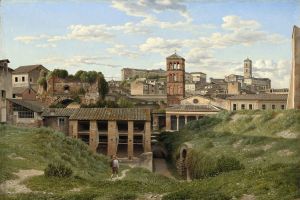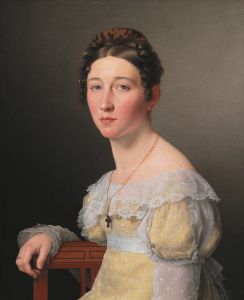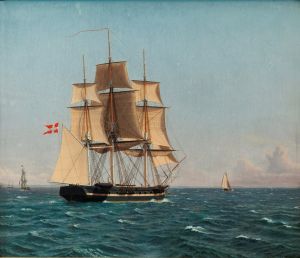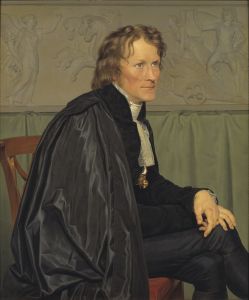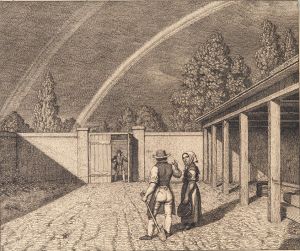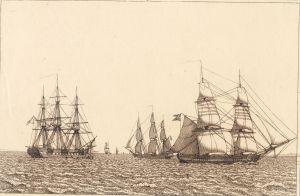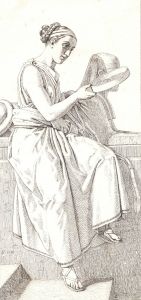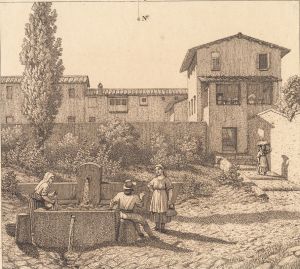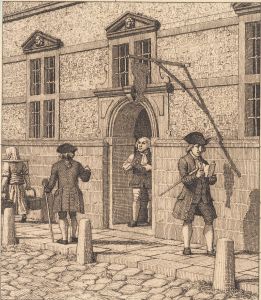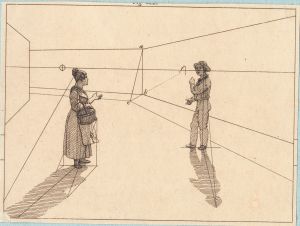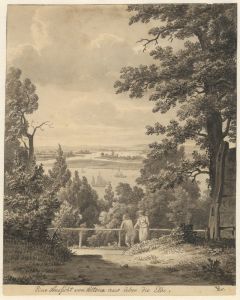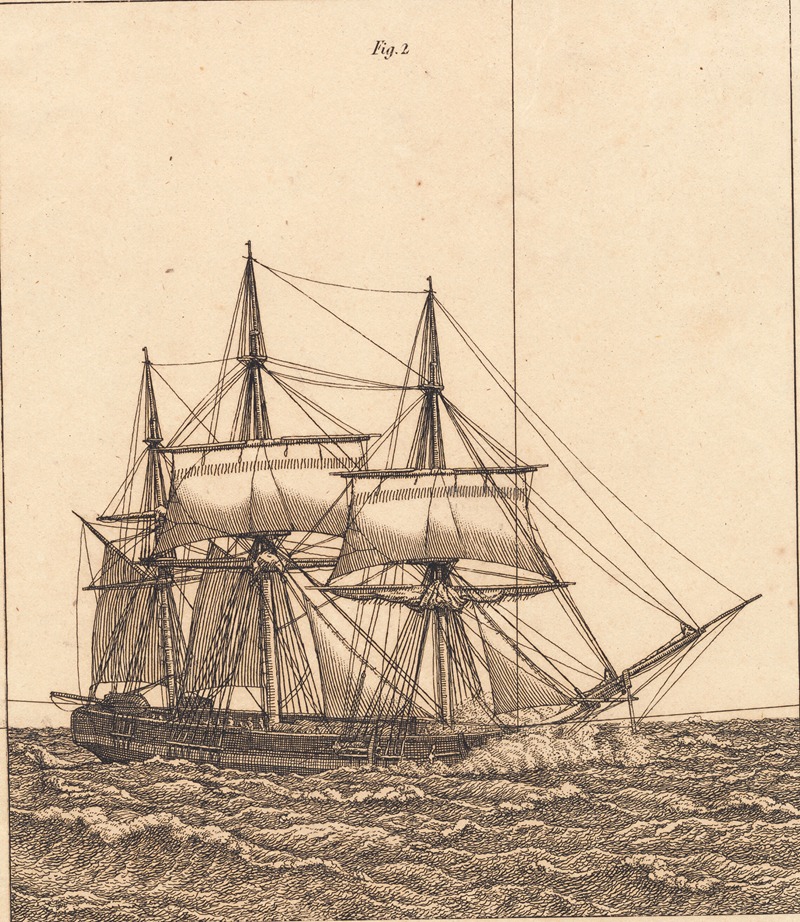
En korvet for fulde sejl Illustration til Linearperspectiven , Tavle X
A hand-painted replica of Christoffer Wilhelm Eckersberg’s masterpiece En korvet for fulde sejl Illustration til Linearperspectiven , Tavle X, meticulously crafted by professional artists to capture the true essence of the original. Each piece is created with museum-quality canvas and rare mineral pigments, carefully painted by experienced artists with delicate brushstrokes and rich, layered colors to perfectly recreate the texture of the original artwork. Unlike machine-printed reproductions, this hand-painted version brings the painting to life, infused with the artist’s emotions and skill in every stroke. Whether for personal collection or home decoration, it instantly elevates the artistic atmosphere of any space.
Christoffer Wilhelm Eckersberg, often referred to as the "father of Danish painting," was a prominent figure in the Danish Golden Age of painting. Born in 1783 in Blåkrog, Denmark, Eckersberg played a crucial role in shaping the art scene in Denmark during the 19th century. His works are celebrated for their precision, clarity, and adherence to the principles of linear perspective, which he mastered during his studies and travels.
One of Eckersberg's notable works is "En korvet for fulde sejl Illustration til Linearperspectiven, Tavle X," which translates to "A Corvette Under Full Sail Illustration for Linear Perspective, Plate X." This painting is part of a series of instructional illustrations that Eckersberg created to demonstrate the principles of linear perspective, a technique that allows artists to create the illusion of depth and space on a flat surface. The series was intended as a teaching tool for students and artists to understand and apply these principles in their own work.
The painting depicts a naval corvette, a small, maneuverable warship, under full sail. Eckersberg's attention to detail is evident in the meticulous rendering of the ship's rigging, sails, and the play of light and shadow on the water. The composition showcases Eckersberg's skill in capturing the dynamic movement of the sea and the vessel, while also adhering to the strict rules of perspective that he sought to illustrate.
Eckersberg's interest in maritime subjects was influenced by his time in Paris and Rome, where he studied under the guidance of renowned artists such as Jacques-Louis David. His exposure to classical art and the burgeoning interest in realism during this period informed his approach to painting, leading him to focus on accuracy and the faithful depiction of his subjects. This dedication to realism is evident in "En korvet for fulde sejl," where the precise depiction of the ship and its environment reflects Eckersberg's commitment to capturing the world as it appeared.
In addition to his work as a painter, Eckersberg was a respected teacher at the Royal Danish Academy of Fine Arts in Copenhagen. His teachings emphasized the importance of drawing from life and the application of perspective, which had a lasting impact on his students and the development of Danish art. Many of his students, including notable artists such as Wilhelm Bendz and Christen Købke, went on to become influential figures in their own right, further cementing Eckersberg's legacy in the art world.
"En korvet for fulde sejl Illustration til Linearperspectiven, Tavle X" exemplifies Eckersberg's mastery of perspective and his ability to convey the beauty and complexity of the natural world. Through his work, Eckersberg not only contributed to the artistic heritage of Denmark but also provided valuable insights into the techniques and principles that continue to inform the practice of art today.





